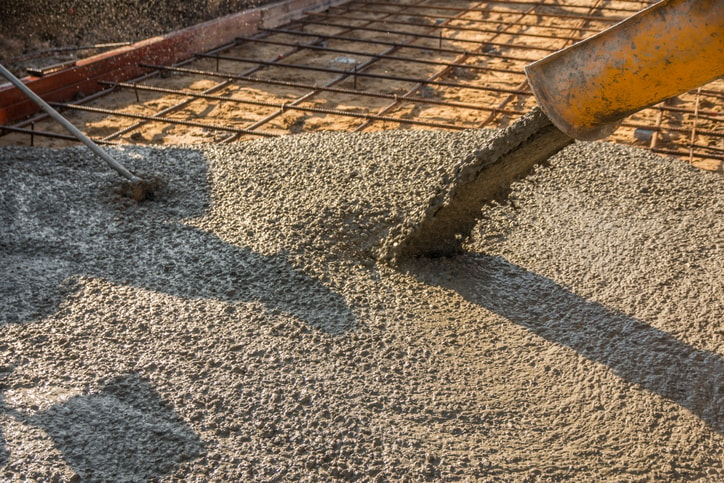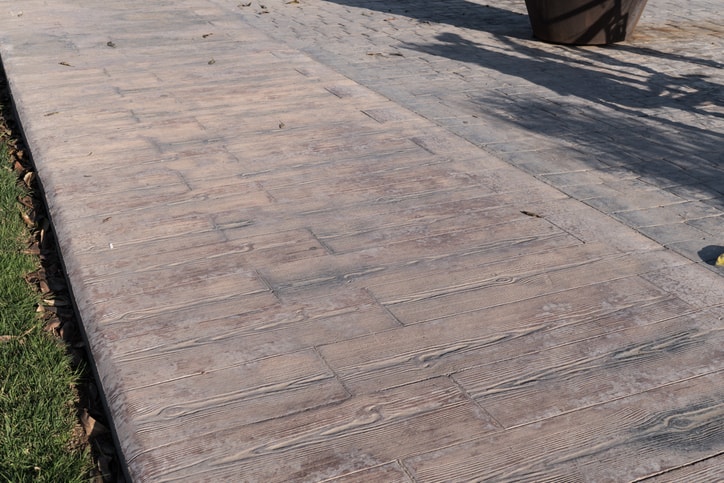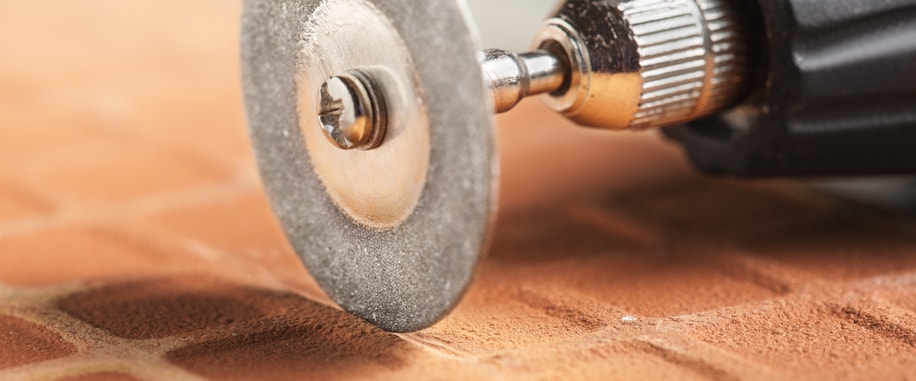Gary has been dissatisfied with his concrete patio lately. It’s just a sad, boring concrete slab sitting out on his grass. There’s nothing interesting about it at all.
This is hard for him because he has always prided himself on the aesthetic appeal of his home. When he bought it, he wanted people to come through and stand in awe of the design choices he made.
“It’s time to add some flavor,” Gary says while standing on the concrete patio, looking down at it with a forlorn expression on his face.
Gary picks up the phone and calls OKCrete. He wants a stamped concrete patio. This will ensure that he gets the reaction from visitors he wants, and it may even increase his home value.
What Is Stamped Concrete?
Stamped concrete is just regular concrete with a unique design to it. It’s often just as functional as your run-of-the-mill concrete slabs that form sidewalks and walkways, but it’s considered decorative concrete.
It will often have interesting crack patterns or even different textures, and you can find it in a variety of colors.
Stamped concrete patios can often be relatively simple.

Or it can be part of much more complex projects.

The sky’s the limit when it comes to a stamped concrete surface. There are so many different designs you can choose from, from sophisticated grey natural stone to a warmer textured aesthetic. You can even get concrete that looks like wood slabs. Whatever you choose, it’s entirely possible because of the process of stamping concrete.
Stamping Concrete Starts Like Any Other Project
It may surprise you to find out that a stamped concrete patio project isn’t that different from other concrete slab projects. There are just extra steps that involve concrete stamps.
Workers start off by digging the area where they’re going to lay down the concrete. It’s not a deep hole. It just needs to be deep enough for 4 inches of concrete to be poured, and it needs to be flush with any surrounding concrete.
Then they add the base layer. This is usually made of crushed-up stone, and it’s there to prevent the concrete from cracking.
After that, they set the form, which is usually just two-by-four boards in the perimeter of where they will install stamped concrete. In many projects, they’ll lay down some rebar, which further reinforces the finished product.
The wet concrete is then poured into the form, and the workers smooth it out.

How Concrete Stamps Change The Concrete Surface
The main difference between a stamped concrete patio and any normal concrete project is that after the concrete is poured and smoothed out, the workers go around and push down on it with concrete stamps.
These are bendy plastic mats that have their own design within them. They have ridges that will produce grout lines, and they have their own particular kind of texture.
The workers strategically lay the texture mats along the concrete surface. They normally work with several stamping mats at a time, which are arranged almost like a bridge that the workers can walk on. They use stamping tools to tamp down on the mats, and then they move the mats to the next place.
Where To Get Concrete Stamps
There are actually a couple ways to get mats for stamped concrete patios. We can either buy them or make them ourselves.
We normally buy them because there are a large variety of different styles and textures that to choose from. You can get stone styles, brick patterns, and patterns that will make your decorative concrete look like wood planks.

Those are just a few categories, and within each of those, there are a lot of different texture options as well. It’s all a matter of knowing what you want your concrete patio to look like. In some instances, you might even want a combination of different textures.
Making Our Own Mats
Let’s say none of the available stamp patterns are exactly what we want. Well, we don’t need to rely on what’s already in the store. We can make them ourselves. This isn’t something we tend to do, but we’ll give you the basics just so you have an idea how the stamps are made.
The way we would create textures in the mats is by molding them to something that has what we want. So if we want a natural stone texture, we might want to use square-shaped stone pavers.
The first thing we would do is apply some kind of sealing agent to the pavers (or whatever we decide to base the mold on). This makes it so the mold doesn’t stick to it.
After that, we arrange the pavers on top of a flat wood board, and we use paint sticks to space them where you want the grout lines to be. We’ll use a pencil to trace where the squares are, take them off, apply glue to the area, and put the pavers back on, so they’ll stick.
We place the paint sticks all around the perimeter to represent the grout lines on the outside. Then we use a tape measure to figure out where we’ll install the mold box before cutting up pieces of board that will be used for it. We place them around the perimeter, and then we screw them in.
We put molding clay into the cracks. After all this, we make a specific mixture of mold rubber, pour it into the box on top of the pavers, and then we let it sit for 48 hours at room temperature. When we take it off, we have a concrete stamp ready to go.
Again, this is a very involved process. Because there are already so many different textures available, we usually buy mats that have already been made.
Coloring Your Stamped Concrete Patios
If you were to make stamped concrete without paying any attention to color, what you would get are plain white concrete patios that happen to have cool designs. If that’s what you’re going for, that’s great, but there are ways of adding color to the stamped concrete to really make it pop There are two basic types of ways we can color your stamped concrete: integral color and color hardener.
Integral Color
Integral color is the easiest way to add color to your stamped concrete. It comes in a powder that we mix directly into water. Then we pour that into the rest of the concrete mix.

When we lay it out — before ever stamping concrete — the entire thing is colored.
At OKCrete, this is our preferred option. We actually prepare integral color in a ready mix truck before we ever start a project.
Color Hardener
Color hardener is a powder that you lay over the top of your stamped concrete project. You do this as you lay the cement out, before you lay the concrete stamps. It takes a lot more skill and effort to pull off.
Integral Vs. Color Hardener
Color hardener has certain advantages over integral color. You can mix multiple colors and create unique designs, and it can further reinforce the existing concrete.
However, at OKCrete, we prefer using integral color for a variety of reasons. It’s much easier to pull off a uniform look, and you don’t have to worry about anything once you lay it all out. The color shines throughout the fresh concrete.
If the concrete ever chips, it won’t be a big deal. The color is still the same underneath as it is on top. You don’t have to worry about multiple colors being above and below.
Color hardener is also more difficult to apply. You have to make sure to spread it out just right or it won’t look good. This makes the process take longer, and it often requires more man power, which translates to more labor costs and total concrete cost.
How We Keep Concrete Stamps From Sticking
If you were to just place a concrete stamp on top of wet concrete, you might notice that it doesn’t look right when you take it off. The mat takes some of the concrete with it, and that makes the texture looks off.
We avoid this problem by using a release agent. This is a powdered substance that we apply to the mats with a thick brush.
The release keeps the concrete from sticking to the mats, and it actually adds a little bit to the overall color once the stamping process is done.
Not every release agent is in powered form. You can also get a liquid release agent, which is used for the same purpose. However, it is mainly for interior projects.
The Detailing Process
After concrete slab has been laid out, stamp patterns have been placed, and the fresh concrete has been dried, you might think the job is done. But anyone who has ever tried to stamp concrete knows that that isn’t true. Now it’s time to get the final details all taken care of.

One of the main things we take care of are any imperfections in the cracks. We generally do this by working through the cracks with a grinder or cutting disc. We’ll use chisels to further the detailing work of the stamped concrete. After that, we fix any chips and uneven parts of the surface.
This process takes a bit of work, but it enhances the finished product and makes it look like it was made from natural stone.
Sealing The Stamped Concrete
The last part of the concrete stamping process is applying sealer to the concrete structures that have been stamped. This will protect your concrete from damage and preserve the color.
This process starts off by cleaning the surface with a pressure washer and possibly a leaf blower. After that, we apply the sealer in the form of a spray over the stamped concrete surface. The sealer needs to be as even as possible. It should not pool up at any particular spot. One way to do this effectively is to spray the surface, and then go over it again with a roller brush.
Different Places Where Stamped Concrete Makes Sense
Chances are, you’re probably pretty sold on stamped concrete after reading this. It is a simple process that can really make your exterior of your home look beautiful! Now the question is what aspects of your home could use stamped concrete. We’ve got a few ideas.
Pool Decks
When you have visitors over for a pool party, they will likely be impressed that you have a pool in the first place. Add simple or irregular stamp patterns, and you are now the talk of the town. People will stand in awe when they see the overall aesthetic appeal of your pool deck.
Stamped Concrete Patios
Give your family a place to enjoy the outdoor spaces together. The patio is a place where you can enjoy your dinner and talk about your day. You can lounge back and watch your children play a game of soccer in the yard. A concrete stamp project on your patio can add a sense of coziness and warmth to your space.
Walkways
Most people have ordinary walkways made from ordinary concrete, but you don’t have to be most people. Make your home stand out with stamped concrete walkways. This will set the pace so that when people walk up to your house, they will already know that you are are the type of person who values the overall beauty of your home.
Outdoor Fire Pits
Getting an outdoor concrete structure like a fire pit is another way to ensure that your family spends quality time with each other. With stamped concrete around the area, you can create an aesthetic that is so warm, you don’t even have to light a fire.
How Much Does Stamped Concrete Cost?
The stamped concrete cost is not as much as you might think, although it is a little more than your standard walkway. You are paying for the extra tools like the concrete stamps as well as the color agent. Plus, you are also spending some money on the manpower to get it done.
You can always do a DIY project, but it won’t be easy, especially if you don’t do it all the time. With stamped concrete, if you get anything wrong, that means more effort on your part to correct it.
At OKCrete, we are excited every time we get to do a stamped concrete project. We would love to work on your home next. We serve customers in the Oklahoma City and Tulsa areas. Request a quote today!
